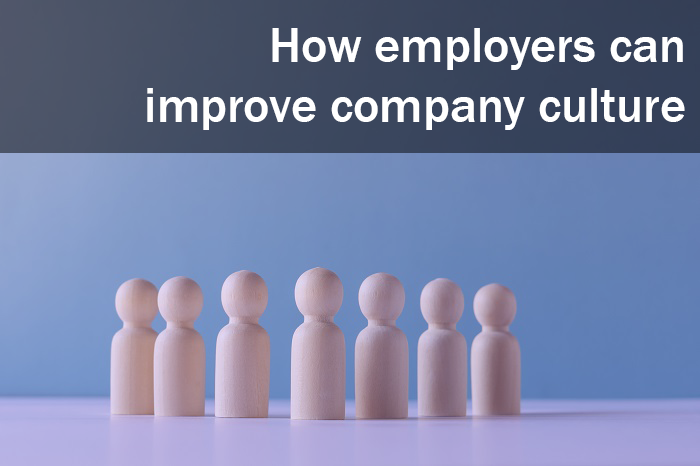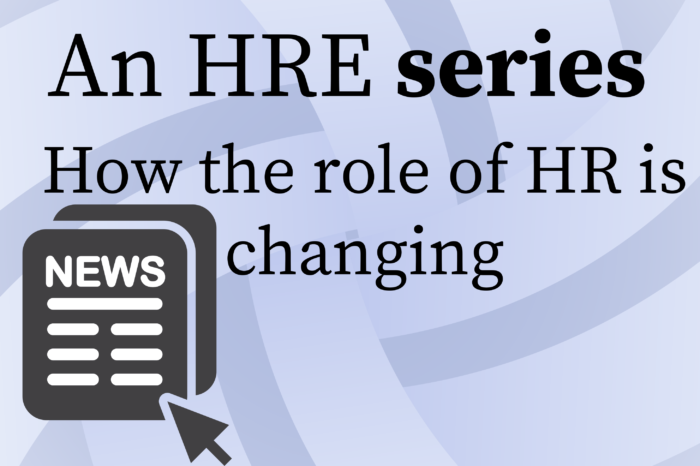When you compete in a high-impact sector like health tech, change is a constant. Over the past decade, the sector has grappled with major regulatory, demographic, behavioral and competitive disruptions. Then came COVID-19 and new models for how, when and where patients get care. Leading through changes of this magnitude and driving sustainable growth are no small tasks. They require companies to retain the flexibility and mindset of a start-up and “create and re-create urgency around key strategic priorities”–a capability that John Kotter, best-selling author, business entrepreneur and Harvard Business School professor calls “the greatest competitive advantage.”
Creating and sustaining urgency isn’t something that comes from a fear-driven burning platform that leaders often use to drive forward cost-cutting, agile or digital transformation initiatives. When leaders announce a burning platform, employees can only sprint for so long until they burn out, and it’s hard to maintain engagement and productivity needed to drive change–let alone spark the creativity needed to seize new growth opportunities and mitigate formidable challenges over a sustained period of time.
“We needed exponential growth and new approaches developed by our talent at the very top of the enterprise. The agile approach and other project management tools just weren’t enough. Vanity metrics like number of people certified and number of agile trains released were not driving the dramatic results the business needed.” -Bill Lucia, HMS CEO
Instead, sustained urgency comes from engaging employees in entirely new ways, creating purpose, getting clear on goals and adopting new mindsets so that employees at every level of the organization can help supercharge growth in a measurable and scalable manner.
That’s what happened at HMS, a leading provider of payment accuracy and population health management solutions. Founded in 1974, the company wanted to ignite growth around a refreshed strategy, increase speed-to-market and improve its investment in talent development.
To do this, HMS activated people at all levels around the acceleration and execution of its most strategic priorities to drive dramatic growth. And dramatic it was. In the six years from 2014-2020, HMS has seen a 53% increase in revenue, an 82% jump in AEBITDA and a significant stock price surge from $8.84 to $37–all while retaining 97% of top talent and a 91% Glassdoor CEO approval rating. Over the same period of time, employee engagement soared from 61.7% to 82.8% and manager effectiveness increased to 89%.
Ignite Engagement at the Top of the House
By inextricably linking strategy execution and culture, HMS CEO Bill Lucia was able to generate buy-in at both the executive team and board level. This is easier said than done. All too often, leaders believe engagement efforts are simply initiatives that drive the metric of engagement while never incrementally improving the business–and would never be allowed to touch the core strategy. Bill relentlessly advocated that some of HMS’ most strategic priorities could be accelerated and showed that the ROI of engagement would be material to the business and shareholders.
“Many companies approach these types of initiatives as employee engagement or soft skills. And while engagement did increase, what makes this approach sustainable and unique is the impact on the growth of the business and the opportunities it created for investors, employees, and customers.” –Maria Perrin, executive vice president, chief growth officer at HMS
This buy-in created an unstoppable alignment at the (very) top of the house, creating the conditions for a highly engaged workforce to be activated around the right business metrics at the right time. Bill knew this would give HMS a competitive advantage in the market. Having highly quantifiable indicators of success allowed executives who were not fully “bought in” on the strategy to suspend disbelief for weeks–not months or years–to see if better results would be generated.
To register for the (free & virtual) Health & Benefits Leadership Conference, click here.
Promote Focus and Clarity
When change accelerates, it can be hard to see priorities clearly. Employees at all levels of the organization need to be able to answer the following questions: “Where are we going?”, “Why are we going there?”, “What windows of opportunity will open and close over the next six to 12 months?” and “How do I get involved?”
Bill and his executive team wanted to get everyone moving in the right direction quickly, and it was imperative that they collectively identify the critical few priorities where the window of opportunity was opening and closing. Following that exercise, the fully aligned executive team felt much more comfortable with unleashing the HMS workforce around these critical priorities. No one individual or team can see all the opportunities and threats. It takes what John Kotter calls the “volunteer army,” guided by leadership priorities, to sustain urgency.
Recruit a Volunteer Army
The leadership team–all the way up to the board of directors–also tracked the number of employees who volunteered to step up and drive change initiatives. This group, known as the volunteer army, consisted of employees who were willing to pursue extra discretionary work rather than being assigned it.
HMS was able to recruit more than 60% of employees to work on leading change–in addition to their traditional jobs. All they needed was a compelling vision of a future that demanded everyone come together to rally around the top organizational priorities that would get them where they wanted to go.
 Volunteers were brought together to explore growth opportunities and research competitive threats. One volunteer, a long-term mailroom employee who wanted to impact AEBITDA quickly took it upon himself to study each customer contract to identify which communications required overnight mail. In the process, he and his team of volunteers identified more than $1 million dollars in incremental, annualized savings by moving to email or less expensive delivery options.
Volunteers were brought together to explore growth opportunities and research competitive threats. One volunteer, a long-term mailroom employee who wanted to impact AEBITDA quickly took it upon himself to study each customer contract to identify which communications required overnight mail. In the process, he and his team of volunteers identified more than $1 million dollars in incremental, annualized savings by moving to email or less expensive delivery options.
The volunteer army was also asked to increase employee empowerment and/or remove obstacles that stood in the way of productivity. In early 2020, employees took notice when executives sponsored a team of volunteers to create a digital hub where employees could go for tips to manage pandemic challenges, homeschool kids, find recipes and check in with one another during an isolating time. By supporting such projects, the leadership team earned loyalty points by demonstrating its true commitment to employee wellbeing–on and off the job.
“I always had a hunch–more than a hunch–of what HMS was capable of achieving. I knew the growth was there, and I knew the key was going to be the people. What I didn’t fully appreciate was how big the results would be, and how deep the transformation would reach. Every area of our business has changed. Our people have changed. As a leader, I have changed.”- Bill Lucia
Score Performance to Drive Results
Often, leaders fall prey to the appeal of highlighting activities instead of results. Many projects conclude with a recommendation or a strategy that can be used going forward, or showing how many people were trained. These activities can be seen as vanity metrics, meaning they appear to demonstrate progress but in truth are not moving the dial on a metric. One HMS team moved beyond counting the completion of a training to instead set a goal that the training would reduce one product’s lengthy turnaround time by 15%. After several prototypes, with some trainings driving 0% reduction in TAT, they were able to find an approach that led to a 29% decrease in TAT for that product.
Similarly, HMS looked to how they could bring focus to behaviors that would most impact their ability to grow. As an example, one behavior was meaningful innovation. Executives intentionally added meaningful to innovation to ensure that people were aligned and taking action in the most strategic directions. They wanted to have a quick answer to “What are we innovating for, and when will we know when we are successful?” Leveraging new technologies is a solid example of this. Implementing AI and machine learning with a focus on driving tangible and unambiguous results, one team at HMS was able to reduce more than 60% of their manual work. By clearly connecting behavior to results, HMS was able to constantly reinforce the cultural behaviors they knew would drive growth.
See also: This is HR’s chance to be the ‘human voice in the room’
Create Leadership Crucibles
Experiences that require leaders to apply new cultural behaviors, test assumptions, learn and emerge stronger are sometimes referred to as “crucibles.” HMS created small, cross-functional teams focused on 90-day sprints to help drive results–and, in the process, shape leaders. For these crucibles to demand new ways of thinking and operating, the role of the executive team was to identify business opportunities and challenges where a focused team could drive dramatic results by thinking and collaborating in new ways.
One example was an enterprise-wide effort to become more customer-focused. The executive team chose one of these “crucible” teams to look into shortening the client onboarding time of one product to drive value faster for the customer. The team went about defining “the how” and achieved results no one thought possible. Within 90 days, the team reduced the onboarding time by more than 60%–delighting the customer and accelerating revenue–and creating a FOMO (fear of missing out) across the enterprise.
Forge Purpose and Connection
In 2020, health tech companies faced one of their biggest opportunities and challenges yet. COVID-19 strained the model of healthcare delivery and left everyone–healthcare partners, boards, executive teams, employees and patients–feeling both isolated and wanting to be part of something bigger than themselves. And yet, HMS delivered record performance in revenue, AEBITDA and employee engagement.
That tells you a lot about HMS employees, but also about company leadership. HMS is a community where employees do more than work. They find purpose together, create meaningful change and drive real value for their customers and shareholders.
“It’s rare these days–too rare–that a CEO really understands just how massive growth can be when they activate their people. It’s so easy to focus on the product, the technology or the process. But it’s the people that are at the heart of every success story.” –John Kotter, chairman at Kotter
Thriving Beyond the Pandemic
As healthcare moves beyond COVID-19, there will be new learnings, changes and life-saving imperatives. Because of the way HMS executives lead, we expect employees to tackle these changes with energy, urgency and purpose. Companies that compete on employee engagement don’t need to manufacture false urgency. Employees feel urgent every day–because they are connected to a clear strategic direction they believe in and are surrounded by co-workers who share a passion to serve. They understand that everything they do matters.




